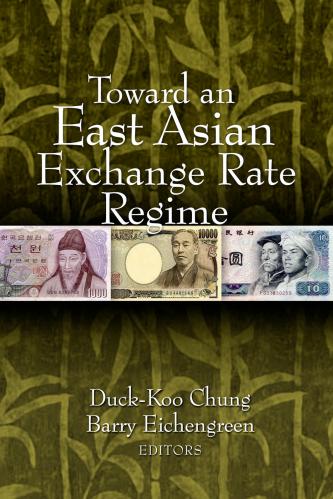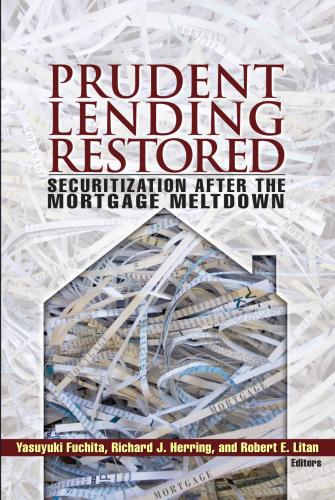Studies in this week’s Hutchins Roundup find funding from the Payment Protection Program (PPP) didn’t go to businesses in regions most affected by the pandemic, exchange rates have stabilized as monetary policy has converged globally, and more.
Want to receive the Hutchins Roundup as an email? Sign up here to get it in your inbox every Thursday.
PPP didn’t reach hardest hit areas and had small short-term effects, but improved firm balance sheets
Paycheck Protection Program (PPP) funding for small businesses didn’t flow to regions hit hardest by the pandemic, find João Granja of the Chicago Booth School and co-authors. Some banks disbursed more funding than others during the initial shock of the pandemic, regardless of the local demand for loans. Regions with a higher concentration of “overperforming” banks received disproportionate funding relative to their economic distress, although this gap narrowed over time as funding became more readily available to all who applied. The authors use this variation in the level and timing of funding across regions to evaluate the impact of the program and find that PPP had only modest effects on short-term local and firm-level economic outcomes, including business shutdowns, revenues, employee hours worked, and county-level UI claims. However, many firms used the funding to shore up their balance sheets and meet other spending commitments, possibly increasing their likelihood of long-term survival (improving employment outcomes in the long-run) and bolstering financial stability by avoiding business evictions and defaults on corporate loans.
International monetary policy similarities have stabilized global exchange rates
Global exchange rate volatility has been steadily decreasing since the 1970s. Moreover, exchange rates remained surprisingly stable throughout the COVID pandemic despite the global recession and prolonged economic uncertainty. Ethan Ilzetzki of the London School of Economics and Kenneth S. Rogoff and Carmen M. Reinhart of Harvard argue that this is due to increasingly similar monetary policies across countries. The authors note that the volatility of exchange rates has decreased as global variation in inflation and interest rates, which are integrally tied to exchange rates, has decreased. Due to the similar COVID policy responses of central banks globally, close to 100% of countries have annual inflation below 2.5% while about 90% of countries have set interest rates at or below zero. The authors caution that systemic economic crises are often disruptive to exchange rates and many risks introduced by COVID—including a reduction in globalization and travel, long-lasting adverse shocks to international supply chains, an increase in bankruptcies, and the looming potential for an inflation spike—could undermine exchange rate stability in the future.
Large US banks are unprepared for a 2008-type liquidity crisis
In reaction to the 2008 financial crisis, U.S. banking regulators required all “globally systemically important banks” (G-SIBs) to maintain liquid assets sufficient to cover the net outflows of cash expected during a liquidity crisis that lasted 30 days—in other words, banks must have a Liquidity Coverage Ratio (LCR) of at least 100%. By official measures, all G-SIBs meet this standard. However, Laurence M. Ball of Johns Hopkins argues that the assumptions used in stress tests to determine the adequacy of liquidity understate the likely cash outflows and overstate the likely cash inflows. Using data from the 2008 bank crises to revise the stress scenarios, Ball re-estimates the LCRs of six of the banks and finds their liquidity would likely fall short of the 100% metric in a repeat of that crisis. The official LCRs for the two firms that are primarily broker-dealers and investment banks, Goldman Sachs and Morgan Stanley, are overstated the most, reflecting the author’s assertion that outflows from secured funding and lending and derivatives transactions are strongly underestimated in the official stress tests. He adds that more transparency on rule assumptions and banking information would allow external observers to better assess the rule’s accuracy and usefulness.
Chart of the week: Case-Shiller home price indices continue rising amid pandemic
Chart courtesy of S&P Global
Quote of the week:
“The wide-ranging nature of the instruments we use today raises the bar of accountability. But side effects are a difficult topic for central banks, no less than for medical practitioners. The evidence on side effects is often inconclusive, before it is too late. Money illusion, for example, may push house prices increasingly away from fundamentals, despite real interest rates not being extraordinarily low. Banks may start restricting their lending activities the lower yields are and the flatter the yield curve is, particularly in an environment in which capital buffers may need rebuilding following the coronavirus (COVID-19) crisis,” says Isabel Schnabel, member, Executive Board of the European Central Bank.
“And the larger the share of bonds that we purchase, the higher the risk that market liquidity may deteriorate over time. These concerns raise the question as to whether monetary policy should take financial stability considerations more systematically into account and, if so, how this should be done.”
The Brookings Institution is committed to quality, independence, and impact.
We are supported by a diverse array of funders. In line with our values and policies, each Brookings publication represents the sole views of its author(s).











Commentary
Hutchins Roundup: Evaluating the PPP, exchange rates, and more
November 25, 2020